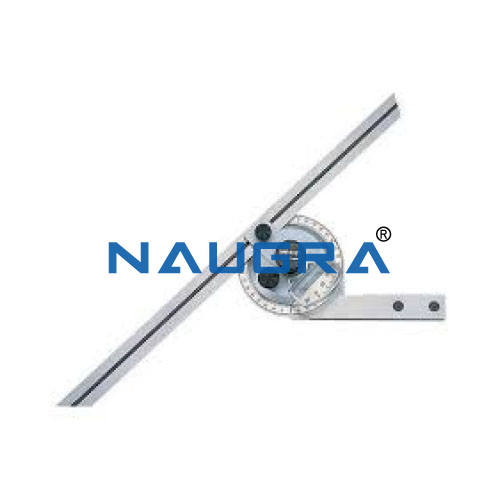

It also means that each division of the vernier scale would be equal to 1/12 th of 23°. The above-mentioned 12 divisions are equally spaced in the span of 23° of the main scale. It is also the reason for multiplication by 5 to get the reading of the vernier scale before adding it to get the final reading. These divisions are marked from 0 to 60 minutes of the arc this magnifies that each division is equal to 5 min of an arc. On the vernier scale, there are 24 divisions in total with 12 divisions on the right side and 12 divisions on the left side of the center zero. The main scale readings are graduated in degrees of arc. The value hence obtained is the reading of the vernier bevel protractor. Add both main scale and vernier scale reading.Multiply the divisions you obtain on the vernier scale with 5 minutes.Note how many divisions it is from the zero marking to the two coinciding lines. Keep observing until you notice two lines are exactly coinciding. Measurement in a counterclockwise direction: Observe every graduation (both main scale and vernier scale) on the left side of the “0” marking of the vernier scale.Measurement in a clockwise direction: Observe every graduation (both main scale and vernier scale) on the right side of the “0” marking of the vernier scale.Measurement in a counterclockwise direction (vernier scale travels in clockwise direction): The main scale reading is the number on the right just before that 0 marking.The main scale reading is the number on the left just before that 0 marking. Measurement in a clockwise direction (vernier scale travels in clockwise direction): Observe where the vernier scale’s 0 marking stops.Attach the surface edges of the object to measure on the stock and the blade of the protractor.It may cause degradation to the instrument as it is made of metals. Don’t forget to clean the vernier protractor as well if there is debris or water or etc.The side surface of the object to measure should be cleaned properly.Advertisements Steps of Taking the Vernier Protractor Reading At the end of the step, they will add the vernier scale reading and the main scale reading.
#BEVEL PROTRACTOR HOW TO#
For someone who wants to learn it, this page will take them through the steps of how to read the vernier scale. But, it’s basically the same with reading the vernier caliper. And it comes with some locking mechanisms. Aside from that, the measurement can be taken although the blade rotates clockwise or counterclockwise. This protractor model solves the limitation of a regular semicircle protractor by having a movable arm that measures 360 degrees. In contrast, if you are going to measure the angle of slope or surface level, you need an inclinometer. If you are going to measure the angle of a working edge, in which two surfaces are available for the blade and stock to stick onto, a vernier protractor comes as the suitable measuring tool for that. The same as the analog vernier caliper and vernier height gauge, a vernier protractor employs a vernier scale to magnify the main scale’s reading so that it provides that great resolution. Not only for measurement but also for layout, it can be a decisive tool for accuracy and precision in which the resolution of the vernier protractor reaches up to 5 minutes. Vernier protractor or vernier bevel protractor is an important tool in angle measurement.


 0 kommentar(er)
0 kommentar(er)
